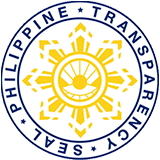“The journey of a thousand miles begins with one step,” the great Chinese philosopher Lao Tzu once said.
For the people of Nagcanasan, a landlocked barangay of Pilar town in Abra, each journey to reach the town proper is like a thousand mile of grueling hike which takes about three to four hours on an average.
Mountain ranges and rivers have provided the people with bounty but have also become natural barriers that sealed the area away from outside access and communication.
The only way in and out is through an unpaved rough road with no means of public transportation throughout the year. An uneven dusty road welcomes fir
st time visitors during dry season which gets worse during the rainy season because a strong downpour could easily washout the entire length of the road.
Imagine how severe it would be during typhoons and strong monsoons.
Every now and then, the residents, in the spirit of bayanihan, would pitch in time and effort to fix the coarse road just to let in vehicles during necessities.
For the few hundred residents here, going to town meant braving the scorching sun during dry days or risking heavy rains and strong winds during the rainy season.
“The people experienced long years of agony, anxiety and depression living in a no-access road because of its physical condition,” lamented Punong Barangay Norma Barbosa.
The hapless situation of Nagcanasan has left the residents voiceless and paralyzed on development. The people have felt helpless whenever accidents occur, or when the sick needed hospitalization, or when crimes happen because it is hard to reach the concerned agencies or authorities.
Residents are left with no option but to carry their sick and walk through purgatory to gain access to treatment. Farmers are often forced to sell their agricultural produce at lesser prices else risk spoiling their goods.
Moreover, porters are hired to carry belongings to nearby barangays to access road networks which places a heavy toll on the part of the farmer or resident because of the added expense of paying the porters’ wage.
For years, the people longed to taste development. They yearned for an easier connection outside of Nagcanasan which could help them ferry goods easier and bring them home faster and more comfortably.
The First Step
The initial step towards the realization of a concrete pavement in Nagcanasan came in 2012 when the Kapit-bisig Laban sa Kahirapan Comprehensive and Integrated Delivery of Social Services (Kalahi-CIDSS) Project of the Department of Social Welfare and Development (DSWD) was introduced in the municipality.
The program, which was then funded by the Millennium Challenge Corporation (MCC) and the Millennium Challenge Account – Philippines (MCA – P) through grants, aims to help impoverished municipalities attain solutions to their problems for the welfare of their people.
It was the answer to Nagcanasan’s dream to have a concrete access road for the improvement of the lives of its residents.
Without much fuss, the Municipal Local Government Unit accepted the program, and implementation started after a mass participation of the 19 barangays of Pilar after thorough information dissemination campaign.
Possible sub-projects were presented in the first barangay consultation. Subsequently, following the Community Empowerment Activity Cycle (CEAC), the farm-to-market road was identified by the community as the priority need sub-project and was unanimously concluded.
On their part, the residents complied to the requirements and other matters taken during the barangay consultations in their topmost capability.
The dream of a concrete road connection in Nagcanasan inched even closer to realization when the project was billed the top priority based on the approved criteria through a voting during the Municipal Inter-barangay forum – PRA.
Finally, the 2, 580 linear meters of the Nagcanasan to Gapang Farm-to-Market Road was given a funding of P7, 351, 823.69.
Paving Reality
The project officially started on 8 December 2013. Again in a show of unity and determination, members of the community pitched in varying amounts to defray the expenses for the delivery of materials from town to the construction site.
After almost a year, the road is now at virtually complete. As of November 21, the long stretch of concrete pavement that connects Nagcanasan to the main highway going to town only needs inspection before this can finally be turned over to the community.
The success and benefit of the road pavement is felt deeply and enjoyed not only by the 600 households in the community of Nagcanasan but by other barangays as well.
People can now comfortably travel from one barangay to another at ease or ferry their produce to town and go home faster, regardless of what season of the year it is.
The trouble of carrying ill residents by foot is now history and emergency situations are now easily answered by responding agencies or authorities.
“They can now go out or travel to other barangays and come home on a cemented road accessible to any means of transportation, dry or rainy season,” Barbosa related.
The agony of inaccessibility will no longer be passed on to the upcoming generations because Nagcanasan’s dreams have now been paved to reality.
The first step was taken and the journey of a thousand miles has reached its end.
“What a dream finally come true!” the village head stated.# DSWD-CAR, SOCIAL MARKETING UNIT, STRELLE C. QUEJADO & KARLSTON S. LAPNITEN with Punong Barangay Norma Barbosa and Area Coordinator Isis Bulayo




